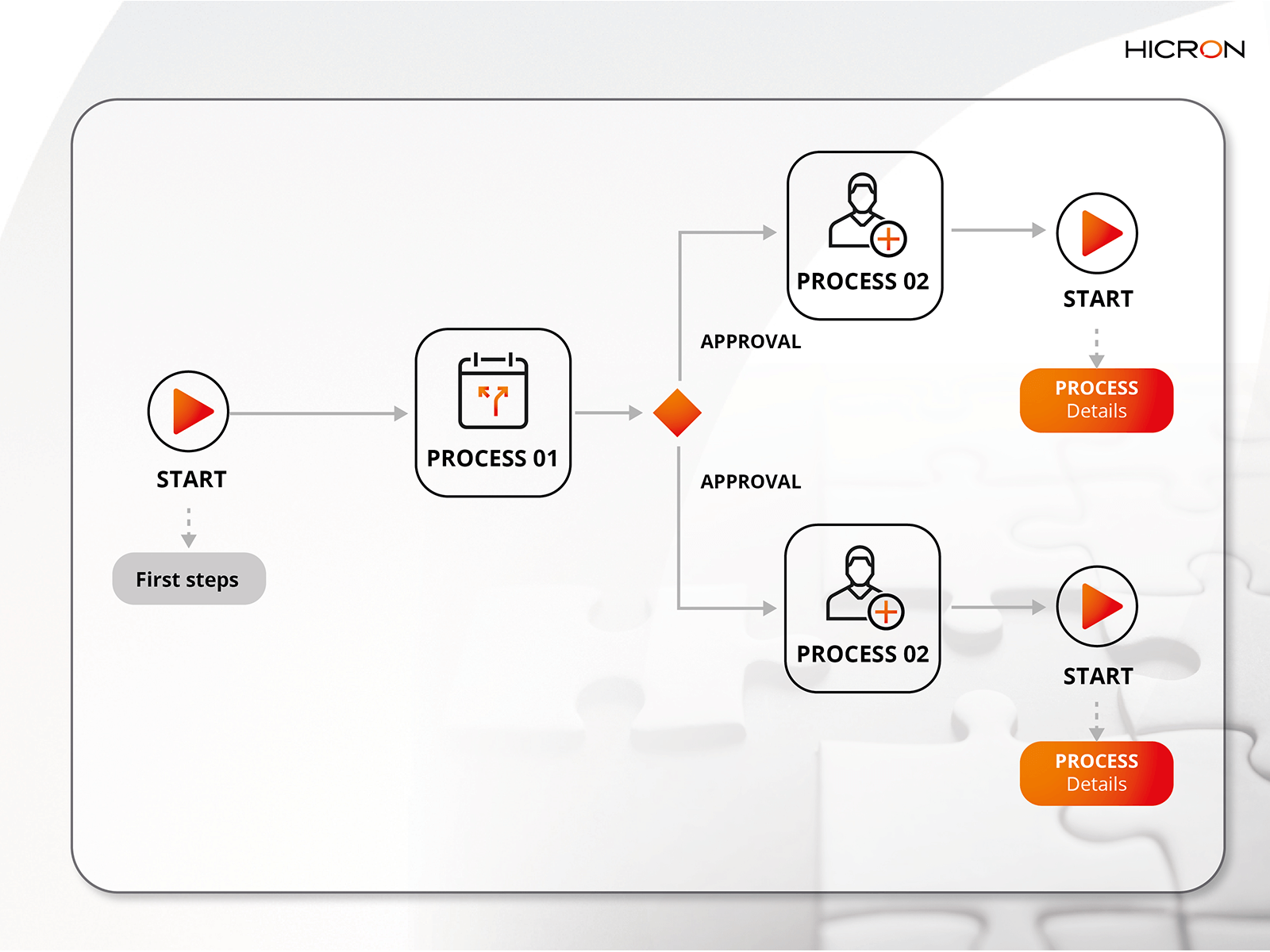Business process maps – what are they?
Creating business process maps is an important part of managing company operations. Presented in the form of diagrams or other graphical formats, they visually represent operations, stages of activities, divisions of responsibilities, and dependencies within the organization. Process mapping, also referred to as process architecture design, involves the identification of processes and all documents, systems, and people involved in their execution.
Mapping business processes offers an opportunity to better understand their underlying assumptions and the dependencies between them. For this to happen, however, the maps need to be transparent and reflect real data. Then they can serve as a meaningful starting point for optimization efforts.

Mapping all processes in an organization – is it worth it?
Does it make sense to map the processes in an organization? Absolutely. This practice enables the identification of the weakest elements that impede efficiency at specific stages, such as redundant steps, duplications, or delays. The result is the ability to streamline workflows and reduce costs. Business process maps also make it easier to pinpoint areas where errors can occur and take appropriate preventive measures. This improves the quality of the delivered products and services.
A comprehensive map of all the processes in an organization clearly shows their structure and flow, promoting greater control over them and making their management more transparent. Mapping also benefits employees by giving them a better understanding of what is expected of them and who is responsible for specific tasks.
Process map – an example of application
Is your company operating across multiple divisions or in diverse markets? Business process maps offer an excellent solution to avoid chaos and standardize activities throughout your organization. They allow you to standardize the quality of work across all outlets and replicate successful practices.
As you can see, there are many benefits to creating process maps for your business, including:
- increased operational efficiency
- improved quality of products and services
- increased transparency
- easier standardization and scalability of operations.
There is no doubt that developing a business process map is a worthwhile investment of time and resources. To make this task easier, you can leverage SAP solutions such as SAP Build Process Automation. This system does not require any programming skills from the user, supports business process modeling at all stages, and can be adapted to your company’s current needs. The user‑friendly interface and intuitive operation further streamline the process.
Another valuable tool for modeling, mapping, and charting processes is SAP Signavio Process Manager. This cloud‑based solution allows you to model processes using a variety of modeling notations, such as BPMN and value chain diagrams, and enables the use of data stored in the taxonomy manager. With SAP Signavio, you can also simulate and create different versions of processes, analyzing their costs and resource consumption. The module facilitates collaborative work, enabling teams to manage processes and comment on them in real time.







